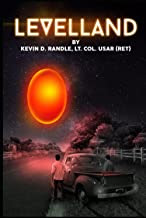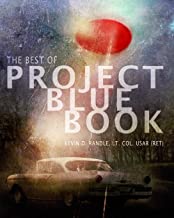Redfern suggests that those who found the wreckage, the officers at the Ros
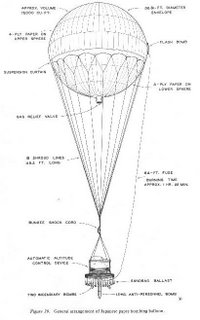
well Army Air Field did not immediately identify the craft because of the weird construction, the aluminized rubber that made up the balloon and other elements that seemed to defy easy explanation. The craft had carried five pilots (or possibly four), all killed in the crash. As the strange contraption broke up, a segment about nine meters long, had fallen away. One of the pilots was sucked out the craft as it came apart, and this is what Mack Brazel found on the ranch he managed near Corona, New Mexico.
This experiment, designed to expose the captured Japanese to high altitude to find out what would happen to the human body, could not be exposed to the general public. At the time, July 1947, the United States was trying Nazis in Nuremberg for crimes against humanity. Some of those crimes included experimentation on human subjects without their consent. Now, according to the Redfern’s theory, the United States had done the same thing. It would be the height of hypocrisy if the United States were engaged in the same sort of human experimentation.
The one thing the theory does do is explain, to some extent, the various aspects of the Roswell case. It has a nice theory for the two crash locations, it explains why the government, in this case the military, would work so hard to hide the facts even today, and it explains the small bodies claimed to have been seen by so many of the witnesses of the Roswell case.
First, I’m not sure why the Horten Brothers flying wing designs have been dredged up again. During the 1930s and the 1940s, these two German brothers worked on what was thought of as tailless aircraft. They had ten or twelve different designs, some of which crashed after only a few flying hours and others that were thought to have been scheduled for mass production but never were.
The Nazis needed a long-range bomber, one that could reach to the United States, and one or two of the Horten brother designs were supposed to have had the range. At the close of the Second World War, the Horten brothers aircraft plants were overrun by the Soviets. Nearly everything was carted back to the Soviet Union and there was speculation that the Soviets would build as many as 1800 Horten flying wings as a bomber force to counter the United States build up of long range, strategic bombers.
In the United States, there was a similar flying wing project, this one created by Jack Northrop. It began prior to the Second World War. The plan also called for the development of a long-range bomber, but other priorities and technical problems kept it from completion. After the war, a four-engine version was created which flew a number of times. In June and July 1947, these aircraft were grounded with gearbox problems, which effectively removed them as one explanation for the flying saucer reports being made.
Although the Northrop flying wing was suggested as a possible source of the Roswell debris, there was never any evidence that it was. Some believed the flying wing might have been responsible for the sighting of strange objects on June 24, 1947 by Kenneth Arnold that launched the modern UFO era. But again, the craft were grounded at the time and there were not nine of them in the arsenal. The Northrop flying wing was proven not to be responsible.
Back to the Horten brothers. One of their designs, known as the Parabola, certainly looks like the object Arnold sketched in the years after his sighting. The problem is that the first drawings Arnold made, in the days after the sighting, look little like the Parabola. And, again, there is noo evidence that any of the Horten designs were flew from the White Sands Missile Range, or that anything designed by the Hortens was built here. The Soviets got all of that when German defense collapsed in 1945.
That takes us back to the Japanese, and what were called the balloon bombs. Starting in 1944, and continuing into 1945, the Japanese launched about 9,000 of these things. It was a project that started because the Japanese had discovered the jet stream and realized that a balloon launched in Japan would reach the western hemisphere, most probably the United States in two or three days. If they put bombs on the balloons, along with some instruments, they could conceivably attack the United States.
The trick actually worked. Balloons launched in Japan, rose during the day and fell during the night. Sandbags were attached and programmed to drop if the balloon dipped too low. This way it maintained its altitude. After cycling a number of times, two or three, the bombs would fall. The Japanese knew that the odds were that the bombs would not hit a city, but did make plans to drop incendiary devices in the northwest, hoping to start forest fires.
Records indicate that about 250 balloon bombs reached the Western Hemisphere, falling as far north as Canada, as far south as Mexico City and as far east as Michigan. Any damage done was of little consequence.
The US Office of Censorship, a wartime creation, working along with the FBI, suppressed the story during the war. They believed that Japanese spies, seeing the public information, would report home, telling of the success. That would increase the number of balloons launched.
The censorship worked well, but was changed when six people in Oregon; a woman and five children on a picnic were killed when a bomb detonated. They had found one of the balloons, lying in the forest and pulled on it causing one of the bombs to explode. At that point a "whispering" campaign began to alert the population about the bombs.
While the ingenuity of the project can’t be questioned, it is still a balloon. The technology to create the balloons wasn’t special, and in fact, wasn’t all that advanced. These were, after all, balloons. It means, there is no reason to suspect that Japanese balloon technology was married with Horten flying wing technology to create some sort of hybrid balloons toting aircraft which carried the deformed, captured Japanese two years after the war had ended.
This wasn’t the first time that such a theory had been suggested at least in general terms. Back in the early 1990s, as I began my research into the Roswell crash, I interviewed a man who worked with NASA at the White Sands Missile Range. Gerald Brown suggested that experiments using the A-9, which is a two stage, modified V-2 rocket, might have been responsible for the debris found by Mack Brazel. He believed that Duraluminum might explain the lightweight, thin metal that had been described by Roswell Army Air Field intelligence officer, Major Jesse Marcel, Sr.
In fact, Brown had an explanation for everything found on the ranch with the exception of the bodies. He did speculate, suggesting that some kind of flying wing, this one designed by Northrop, had crashed while carrying five chimpanzees dressed in silver flying suits. Since the experiment related to the space race, and since launch operations at White Sands had been closed down because of an accident in May 1947, those involved hid their mistake. They feared for their jobs. All this was laid out in UFO Crash at Roswell on pages 168 to 170.
The problem here was, again, no flying wing was missing from the inventories, there was no record of such a launch at White Sands, though the records did exist for the period, and there were no reports that animals had been killed in the tests. A year later, as experiments were designed to test the rigors of launch physics and the dangers of upper atmosphere flight were made, animals were launched. Those records also exist.
What this tells us here is that rumors and stories of experiments pre-existed the revelations of Redfern. In fact, I had told many people that if I could find evidence of an experiment, preferably illegal, which had resulted in the deaths of human subjects, that would be a much bigger story, at least in terms of what the journalistic community was willing to believe. Too many reject the idea of an alien spacecraft crash out of hand. But discover, and prove, some sort of underhanded experiment by the government and nearly everyone would jump on board.
The problem for me was the lack of anything substantial. The records that I had examined at White Sands, in Alamogordo, at the National Archives, at the Southwest History Museum in Roswell, at the universities and government offices in Albuquerque and Santa Fe revealed nothing to lead in that direction.
Then there was the debris described by the witnesses including Jesse Marcel, Sr.; Bill Brazel, son of Mack; Loretta Proctor, and Sallye Tadolini, whose mother, Marian Strickland, had been a neighbor of the Brazels in the summer of 1947. If we stuck to these descriptions, then a terrestrially manufactured machine, even an experimental craft, seems less likely.
In an interview conducted in February 1989, Bill Brazel told me about the
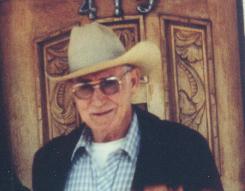
exotic debris he had found on the ranch. He said, "The only reason I noticed the foil was that I picked this stuff up and put it in my chaps pocket. I had it in there, two, three days and when I took it out and put it in the box I happened to notice that it started unfolding and flattened out… I would crease it and lay it down and watch it."
He also described a small piece of debris as light as balsa wood but that was incredibly strong. He said, "The piece I found was a jagged piece." He said that he tried to whittle on it, but couldn’t even get a sliver, suggesting something much tougher than anything used in a balloon.
He mentioned something like fiber optics. He said, "Now there’s this plastic they put a light down one end and it transfers the light down that thing and come out the end."
None of the items, as he described them, other than the fiber optics, appears in today’s world. It is as if we haven’t figured out the secrets of them.
He did say that his father, Mack, had told him, "That looks like some of the contraption I found." That statement, of course, connected the strange debris, which didn’t resemble either a weather balloon or the pieces of a Horton brothers flying wing, ties the strange material found by Bill to the descriptions of the others such as Jesse Marcel.
Sallye Strickland Tadolini was a young girl in 1947. Bill Brazel, about a decade older, showed up at the Strickland New Mexican ranch house a few days after the crash. He had the strange foil with him and let the others have a look at it and play with it.
Tadolini, in an affidavit for the Fund for UFO Research described it this way. "What Bill showed us was a piece of what I still think of as fabric. It was something like aluminum foil, something like satin, something like well-tanned leather in its toughness, yet it was not precisely like any one of those materials. While I do not recall this with certainty, I think the fabric measured about four by eight or ten inches. … Bill passed it around and we all felt of it. I did a lot of sewing, so the feel of it made a great impression on me. It felt like no fabric I have ever touched before or since. It was very silky or satiny, with the same texture on both sides. Yet when I crumpled it in my hands, the feel was like that you notice when you crumple a leather glove in your hand. When it was released, it sprang back into its original shape, quickly flattening out with no wrinkles. I did this several times, as did the others."
The others told similar stories of the material. Loretta Procter said they

tried to burn a small piece, about the size of a pencil and failed. Jesse Marcel, Sr. said they hit a larger, metallic piece with a sledgehammer without doing any damage or marking the metal.
What this really means is that there is a body of first hand testimony that suggests the debris found near Roswell was something extraordinary. The elements, the foil that would return to its original shape without sign of a wrinkle or crease, the extraordinarily tough metal that was as light as balsa but so strong that it wouldn’t cut or break like ordinary metals, and some something that sounded suspiciously like fiber optics at a time when no such thing existed on Earth, suggested the extra-terrestrial.
Redfern’s theory hinges on the integrity of his anonymous, but alleged first-hand witnesses. Once, five or six years ago there were a number to stories told by alleged first-hand witnesses about themselves, what they had seen, and about alien bodies. Frank Kaufmann talked in detail about these things, as did Gerald Anderson, Jim Ragsdale and Glenn Dennis. Kaufmann offered copies of official documents to prove who he was. He had a letter that if authenticated, proved Roswell has been a spaceship crash.
Redfern, in an interview conducted for UFO Review (found at
http://www.uforeview.net) said that the witnesses he refused to name had proven who they were by documents in their possession. To Redfern, this is proof that they are who they claim to be and that their tales can be trusted.
Yet the same can be said of Kaufmann. His documents looked authentic, and were, after a fashion. Only after the originals were found, could we see the alterations he had made to the copies he had given us. He’d used whiteout and a copy machine to forge documents to support his claims. It should be noted that unless the original document is available for scrutiny, documents are of little value. As Frank Kaufmann said, "The Xerox is as loose as a goose." He meant that it was simple to forge documents in the modern age.
Interestingly, in Redfern’s book, he uses some of the Kaufmann testimony to bolster his case, seemingly unaware that Kaufmann invented his role in Roswell. If Kaufmann made up everything and had no role in the Roswell case, then where does that leave Redfern? He used Kaufmann's description of the craft suggesting it was authentic to bolster his Horton brothers flying wing theory. Since we know that Kaufmann was inventing his tale, that testimony does nothing to support Redfern’s theory, and, in fact, detracts from it.
So, if Redfern is wrong, and this wasn’t some kind of horrendous and illegal experiment, what is the answer? It’s the same as it has been for the last two decades. It was extraterrestrial.
Redfern has even suggested that his answer makes sense because he can find no documentation to support it. He reasons, with some logic, those conducting the experiments, knowing that they were illegal, destroyed the evidence when they finished. The files were shredded, the remains of the craft were dismantled and burned and those with knowledge were cautioned to never mention it to anyone at any time.
Redfern tells us that an extraterrestrial craft would not lend itself to such a cover up. Because the biological samples, meaning the alien bodies, were unique and because the craft and its components were unique, they would be preserved so that information could be gathered from it as our technology advanced.
And, it would seem that he would be right. Logic argued in favor of his scenario. Destruction of everything related to the case if it was an illegal experiment and preservation of everything if it was extraterrestrial.
But there are other aspects of this that do take us in the direction of the extraterrestrial. First, is the credible eyewitness testimony about the surprising and the unusual characteristics of the various types of material recovered on the field northwest of Roswell. Clearly, these were things that were beyond the technology of the times and, in fact, some of them are beyond our technology today.
Second is the testimony of the witnesses who were on the scene. Jesse Marcel, Sr., said that this was something that came to Earth. It had not been made on Earth but it came to Earth. As an air intelligence officer, assigned to the base at Roswell, he was in a position to know what they might find out there, if it was Earth-based. He knew about balloons and experimental aircraft and he was convinced that the components he found were none of those things.
Third is the testimony of Major Edwin Easley, the provost marshal at the base. In a conversation held about a year before his death, Easley told me that he believed the craft to be extraterrestrial.
Now, before we get off on a tangent, let me put this into perspective. I had asked him if we were following the right path. He wanted to know what I meant by that, and I said that we thought it was extraterrestrial. He said, "Let me put it this way, it’s not the wrong path."
Convoluted, and maybe a little confusing, but he, as a participant in the recovery, was telling me that the object that crashed was extraterrestrial. He confirmed that to family and friends in the weeks before he died.
And

Patrick Saunders, who had been on Blanchard’s primary staff in July 1947 also, confirmed the extra-terrestrial nature of the crash. Although he was always reluctant to talk about his involvement in the retrieval operation with UFO investigators, he did buy copies of UFO Crash at Roswell. He sent them to friends and family who asked him questions about the crash. On the flyleaf he wrote, "This is the truth and I never told anybody anything."
To me it simply meant that the story as outlined, meaning there had been a UFO crash, was accurate. It meant that Saunders, based on who he was, had put into writing his opinion.
And, what all the evidence means, when it is all taken together, is that Roswell was not some rogue experiment using deformed and mutated captured Japanese, but was the crash of an alien spacecraft because, when you get to the bottom line, those who were there would have recognized everything as terrestrial if that’s what it was. That is the most logical conclusion. Not that they were somehow fooled by the Horten brothers flying wing, a modified Japanese balloon bomb, and the deformed bodies of captured Japanese. The only answer that takes all the evidence into account is that this was truly something from another world.
Nick Redfern's rebuttal can be read in Fate September 2005
*A tip of the hat to Karl Pflock for the title.
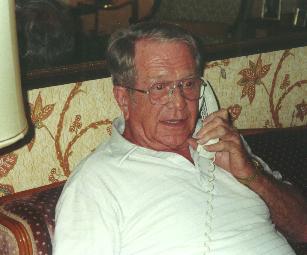 t, the man who issued the press release that claimed the Army had recovered a flying saucer died Thursday, December 15, 2005. He was 83 according to published reports.
t, the man who issued the press release that claimed the Army had recovered a flying saucer died Thursday, December 15, 2005. He was 83 according to published reports. t, the man who issued the press release that claimed the Army had recovered a flying saucer died Thursday, December 15, 2005. He was 83 according to published reports.
t, the man who issued the press release that claimed the Army had recovered a flying saucer died Thursday, December 15, 2005. He was 83 according to published reports. mbardier. He served in the Pacific during the war and later, in 1946, participated in Operation Crossroads, the atomic tests at Bikini. He had been assigned to the 509th Bomb Group on temporary duty for the atomic tests, but that duty was expanded into a permanent assignment. In July 1947, he was a first lieutenant and worked as the Public Information Officer for the bomb group. He left the service the next year and remained in Roswell for the rest of his life.
mbardier. He served in the Pacific during the war and later, in 1946, participated in Operation Crossroads, the atomic tests at Bikini. He had been assigned to the 509th Bomb Group on temporary duty for the atomic tests, but that duty was expanded into a permanent assignment. In July 1947, he was a first lieutenant and worked as the Public Information Officer for the bomb group. He left the service the next year and remained in Roswell for the rest of his life.






